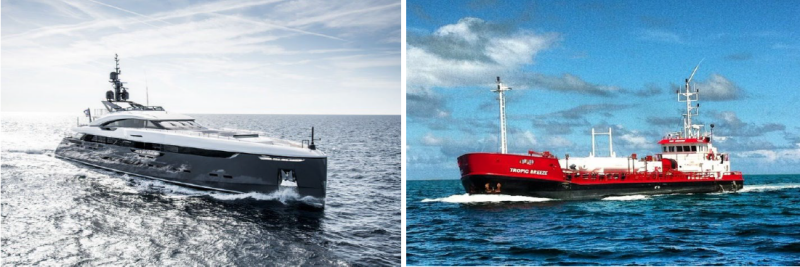A 2021 collision in the Bahamas highlighted a fundamental element of collision regulations that appears with regularity in marine collision litigation — the requirement to maintain a “proper lookout.” The collision also brought attention to the rule on overtaking vessels.
The collision occurred some 20 miles northwest of Nassau between the 176' aluminum yacht Utopia IV and the 159' steel product tanker Tropic Breeze.
The captain of the Utopia IV was in control of the vessel. The bosun handled navigation and the bridge log. The captain left the wheelhouse a few times to check on passengers. While alone in the house, the bosun saw no radar or AIS targets.
On the bridge of the Tropic Breeze, an able-bodied seafarer (AB) and the master were on watch. The tanker’s AIS had a power issue and only worked intermittently. At around 10 pm, the bow of the yacht struck the transom of the tanker. The relative speed of the impact was about 15 knots, given the yacht’s speed of 20 knots and the cargo ship’s speed of 5 knots.
The National Transportation Safety Board (NTSB) concluded that visibility was good, at around 10 miles, and the cargo vessel’s stern light should have been seen. The NTSB said it was likely that neither vessel’s crews looked at the radar display for about 12 minutes prior to collision (based on time to cover three miles at a relative closing speed of 15 knots).
As the overtaking vessel, the yacht was required to give way to the cargo vessel. The NTSB concluded that the yacht had not maintained proper lookout. The NTSB also felt that if the tanker had noticed the approaching yacht, it could have signaled the potential danger in some manner, using radio, whistle, or other means.
The NTSB identified the yacht’s actions as the probable cause of the collision. But it also identified the tanker’s conduct as a contributing factor. If there’s a lesson to be learned here, it might be the significance of the concept of “proper lookout.”




